Don’t be put off by the weather. We have gear, tips and riding techniques to help you beat the winter blues.
On cold, wet, wintry days it can be tempting to leave the bike at home. However, with the right gear and a little know-how, riding in winter can be just as enjoyable and even more satisfying than in warmer months. Plus, there’s the added bonus that, come summer, you’ll still be in top shape.
Kit
Ironically, overheating is the main thing to protect against when dressing for winter riding. Many water-resistant and waterproof jackets keep water out but trap sweat and too much heat close to the body, even if they claim to be breathable. They can also be cumbersome and restrictive. A smarter alternative is to wear multiple thin and breathable layers. Given the days are shorter and daylight hours are often dimmed by cloud cover and rain, choosing clothes and accessories with reflective strips or details, such as a RonDSwan leg band (www.rondswan.com.au), may increase your visibility. Reflective material is most easily seen by drivers when worn on the ankle or leg.
Head and neck
There are many options for keeping your noggin warm. A skullcap, fitted wool beanie or winter riding cap will fit under your helmet, with a winter riding cap having the added bonus of a small visor to keep the sun and rain off your face. A ski-style headband is also a good investment for people who suffer from cold ears, and neck gaiters or snoods are a smart alternative to scarves as they won’t flap or snag on any part of the bike and can be pulled up over your nose and mouth when it gets really frigid.
Torso
A combination of layers and materials is the best way to protect your core. Start with a Merino wool base layer to keep your chest warm and wick sweat away from your skin, followed by a long-sleeve jersey or top, or a short-sleeve jersey with arm warmers. The wind chill factor can make it feel much colder than it is, so block the wind with a wind vest or vented soft shell rain jacket. A selection of wind vests and arm warmers are featured in Ride On’s ‘Beat the wind’ article (bit.ly/153bfMy). For the sartorially conscious, there are also many stylish, cycling-specific rain capes and jackets available, but remember that breathable pieces with mesh panels and/or zippered vents work best to minimise overheating.
Arms and legs
Thermal arm, leg and knee warmers will keep you cosy at the start of your ride but are easily removed and stored in a jersey pocket if you do overheat. They’re also a thrifty alternative for those who don’t want to splash out on a whole winter kit.
Because your legs are working hard throughout the ride, they don’t need as much thermal protection, although your knees should be warm enough so they won’t stiffen up. For most riders, a pair of full-length leggings will suffice.
Those looking for something a little bit different might also give embrocation crème a burl. Similar to deep heat, it’s rubbed into the skin and heats up with movement, making it possible to ride comfortably in shorts all year round. See our article about embrocation (bit.ly/SGV8Mp).
Those who want to stay dry might consider a pair of waterproof over pants. Ride On recommends Ground Effect Helter Skelters (www.groundeffect.co.nz).
Hands and feet
Given your hands and feet are the furthest points blood travels to and the major contact points with the bike, they are the first things to go numb and the most important to keep warm. Invest in a good pair of windproof gloves. If you find full-fingered gloves too warm, try summer gloves over a silk or wool-liner glove.
Waterproof socks, such as SealSkinz (www.sealskinz.com), will definitely protect your feet from rain, though some find them too warm for the Australian climate. Woolen socks are ideal; wear two thin pairs when it’s really cold. Invest in a pair of toe covers or overshoes to protect your feet from wind and rain. Ride On recommends BBB Ultrawear shoe covers (www.bbbparts.com.au).
Backpacks and panniers
A waterproof backpack or pannier is ideal for winter. Alternatively, a waterproof backback cover, such as the Hi-Viz Hump from Cycling & Sports Clothing (www.cyclingsports.com.au) will protect your valuables from the elements. To be doubly safe, it’s a good idea to seal valuables and spare clothes in plastic bags.
Dressing for high-intensity riding
When riding at high-intensity you are more likely to get wet from sweat than rain unless you dress appropriately. Breathable layers will be more comfortable (and less clammy) than waterproof ones, unless it’s really hammering down. Keep warm by protecting your core against wind chill with a wind vest. Arm and leg warmers are easily removed if you start to overheat.
Key
01 Merino base layer
02 Lycra bib knicks
03 Merino socks
04 Super Roubaix head band
05 Short-sleeve jersey
06 Wind vest
07 Super Roubaix arm warmers
08 Heavy knitted full-finger gloves
09 Super Roubaix leg warmers
10 Heavy knitted over socks
Dressing for low-intensity riding in winter
For low-intensity riding, such as commuting, overheating is less likely and staying warm and dry is the priority. Opt for good thermal layers and a waterproof shell.
Key
O1 Merino base layer top
02 Lycra bib knicks
03 SealSkinz waterproof thermal socks
04 Woolen cycling cap
05 Thermal long-sleeve jacket
06 Wind-stopper gloves
07 Waterproof, breathable 3/4 over pants
08 Wind-stopper bootie covers
Bike
If you set up your bike correctly at the start of the season, a few extra minutes’ cleaning each week, or after particularly mucky rides, should be all that’s needed to keep the rain and road grit from wearing out components.
Mudguards
If you do one thing to winterproof your bike, install mudguards. Once upon a time mudguards were only available for practical commuters, but now there are also thin, lightweight, full-length fenders available for road bikes, such as the Crud Road Racer Mk2s (crudproducts.com).
There are also tailored mountain bike mudguards that clip onto the seat and down tubes, as well as clip on ‘rain tails’. However, it’s worth noting the latter aren’t as effective as full-length mudguards, as they don’t protect fellow riders from spray.
Tyres and tubes
Of all the bike’s components, tyres feel the change of season the most. Wet roads littered with debris reduce traction and increase risk of puncture. Consider switching to wider tyres or lowering your tyre pressure by about 10psi to regain lost traction. It’s also wise to opt for tyres with built-in puncture protection, such as a Kevlar strip or similar, particularly for your rear tyre which bears most of the load and is therefore more vulnerable. It’s also a good idea to fill your tubes with Slime (slime.com.au), which hardens upon contact with the air, preventing most minor punctures.
Lights
Riders are legally required to run a white front and red rear light when riding in low light conditions. The 2013 Ride On lights test (bit.ly/16QTq3N) rated the Moon Mask as our top compact front light, the Moon Shield as the top compact rear light and the Moon X-Power 500 as the top high-powered front light (www.moonlights.com.au).
When riding on a path, use caution with high-powered lights as they can ‘blind’ oncoming riders. To ensure you can see and be seen, it’s a good idea to run two front lights: one flashing and pointing straight ahead and one steady beam directed at the riding surface.
Pedals
Providing you’re confident using them, switching to a clip-in shoe and pedal system, such as Shimano SPDs, will prevent your foot slipping off the pedal in wet weather. Be sure to keep both pedals and cleats free of muck and lubricate pedals with silicone spray for best results. If you do ride with flats, ensure they have good grip.
Before a ride
The best way to get the most out of your winter riding is to be prepared. Before setting out, check the weather radar (www.bom.gov.au) to avoid being caught in an unexpected storm. Really heavy rain rarely lasts, so if it’s hammering down, delay your ride until the worst is past.
It’s also important to dress for the intensity of your ride. If you’re only going a short distance at low speed, a thick jacket may be fine, but for longer trips or when you plan to get your heart rate up, removable layers are a better way to go. It’s also a good idea to pack a change of clothes, or at least socks and jocks in a sealed plastic bag inside your backpack or panniers.
During a ride
In general, you need to be more aware on the road in winter as there are more hazards and braking in wet conditions takes longer. Low winter light affects rider and driver vision and, depending on the time of day and the direction you’re travelling, can make approaching vehicles or obstacles more difficult to see or make it harder for drivers to see you. Consider where the sun is in relation to the traffic and ride assertively. Don’t be afraid to take the lane where there is inadequate or no bike infrastructure and avoid creeping up alongside cars, particularly when they’re turning left.
Braking takes longer in winter as water and road grit on your wheels makes it harder for brake pads to grip the rims. Lightly apply the brakes well before you need to come to a complete stop to squeegee water off the rims. Given tyres also have less traction on wet, slippery or metallic surfaces, avoid riding over manhole covers, painted lane markings and tram tracks. If you have to cross any of these, do so at a minimum 45°, relax your grip on the handlebars and avoid braking until you’re back on a grippier surface.
Also bear in mind that puddles can be deceptively deep and hide potholes and other obstacles
Given the changed conditions of winter riding, it’s a good idea to reduce your speed to give yourself extra time to assess and react to upcoming obstacles.
After a ride
Setting aside a few minutes after your ride to clean up your bike and dry your clothes will help make your next ride smooth and enjoyable. If you’re locking up your bike outside, a plastic seat cover will save you a wet backside on the way home (a shower cap will also do the trick).
If your shoes are wet, filling them with newspaper or Stuffitts (cyclestyle.com.au) will speed the drying process. If possible, hang up your clothes to dry where air can circulate freely through them.
Bikes collect extra road grit in the winter that can wear down your brake pads and drivetrain. Cleaning your bike more often prevents muck building up. After a wet or muddy ride, use a clean cloth to wipe water and grit from your rims then rinse your chain with water and run it backwards through a clean cloth to remove grit. To release water trapped in the frame, locate the drain holes – typically located in the rear stays and/or fork and tilt the bike vertically to let the water run out. Alternatively, try the same technique but remove the seat post.
Debris can also lodge in the tyres making them vulnerable to punctures. Using an old spoke or similarly sharp object, dig out any small shards lodged in the rubber.
Materials guide
Merino wool
Merino sheep produce some of the world’s softest and finest wool. It’s wicking and temperature-regulating properties prevent dampness and overheating, making it a popular material for athletic wear. Like other wools, it retains warmth when wet and contains lanolin, an antibacterial which keeps the garment odour free. However, it’s also thinner, softer and more comfortable than most wool, making it an ideal material for base layers.
Sportwool™
Designed by the CSIRO, Sportwool™ combines a layer of Merino wool close to the skin and a polyester outer layer. It works first to delay sweat production by absorbing the humidity close to the skin that precedes sweat, and second to move sweat away from the skin to the outside of the garment. Its wicking abilities and breathability keep the rider cool while riding and reduce post-ride chill. It’s also lightweight, machine washable, offers UV protection and, best of all, remains odour free.
Cotton
There’s evidence of cotton being used as fabric as far back as 5,000 BC. However, while it can be fine for everyday wear, it’s not ideal for riding in. It absorbs moisture and sticks to the skin when wet. It’s also a poor insulator, meaning you’ll quickly go from clammy to cold at the end of your ride.
Waxed cotton
Developed by the Scottish sailing industry, waxed cotton is cotton treated with paraffin wax, which makes it waterproof. Originally popular from the mid-19th to the mid-20th century, waxed cotton is making a comeback among the cycling hip. Be aware that the wax will eventually wear thin and will need to be reapplied.
Lycra
Although Lycra is a specific brand, the term is often used to refer to spandex or elastine. It’s typically mixed with cotton or polyester and is very elastic and quick drying. It is designed to cling to the skin, so while not waterproof, it’s quick drying and the wet material won’t flap against you. Machine drying restores lost elasticity.
Super Roubaix™
A thermal fabric often used in arm and leg warmers. It has a similar feel to Lycra, but is much thicker, providing both warmth and freedom of movement. It compresses the muscles while wicking moisture away from the skin.
Polyester
Wrinkle-resistant and quick-drying, polyester retains its shape. It’s often used in jerseys and blended with natural materials, including wool and cotton. It is a strong fabric with good wicking ability, but retains odour.
Gore-Tex®
According to its manufacturer, Gore-Tex® is durably waterproof, windproof and breathable with nine billion pores per square inch. Gore-Tex® products are also seam sealed (see below) with a water-repellent coating to protect from rain. However, while Gore-Tex® is ideally suited to northern hemisphere winters, many believe it causes riders to overheat in Australia’s milder climate.
Seam sealing
Seams are a weak spot for waterproof and water-resistant products, as holes where the needles and thread passed through can also be penetrated by water. These holes are also often stretched over time with wear. Seam sealing uses adhesive tape or liquid to seal these holes and prevent water passing through.
Water-resistant, water-repellent and waterproof
While a waterproof garment will keep you dryer than a water-resistant or water-repellent one, be aware that it is also likely to be less breathable and you may end up wetter from perspiration than you would have from the rain.
For more winter riding gear, check out the Ride On recommends page. Got a winter riding tip? Let us know below.
Ride On content is editorially independent, but is supported financially by members of Bicycle Network. If you enjoy our articles and want to support the future publication of high-quality content, please consider helping out by becoming a member.

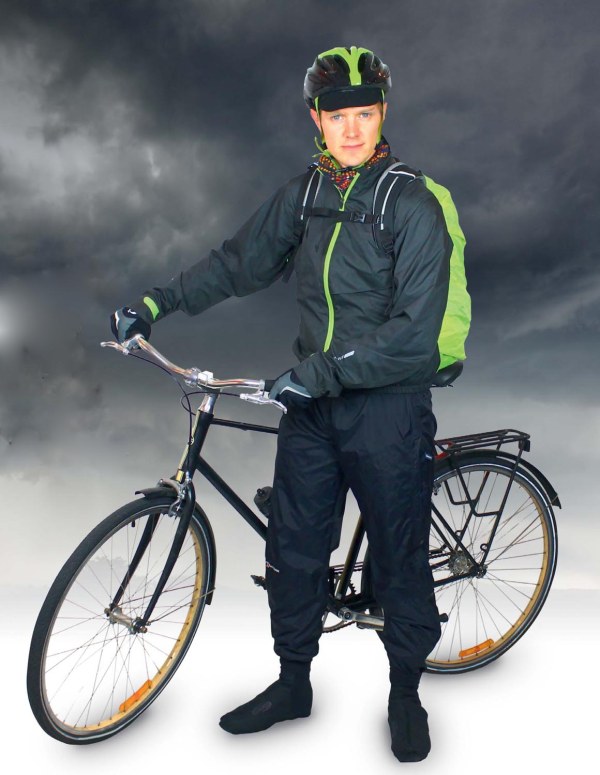
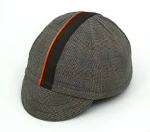
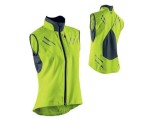


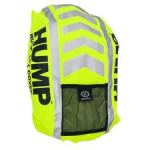



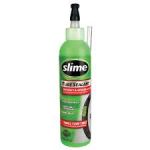
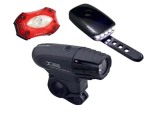
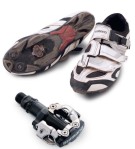
Thank you for your detailed and excellent advice